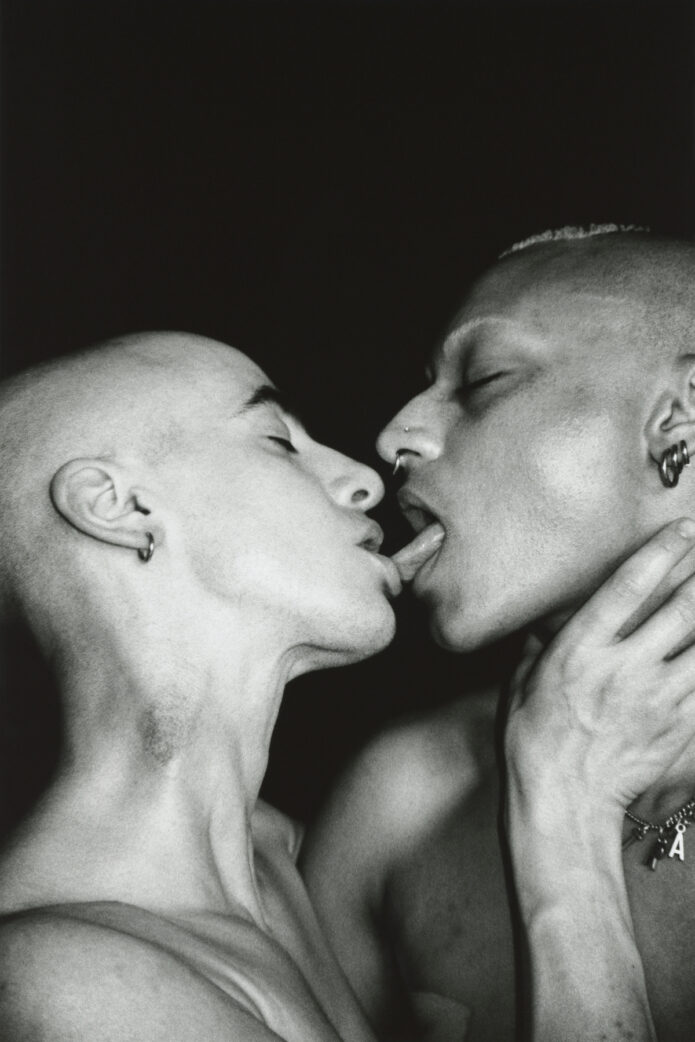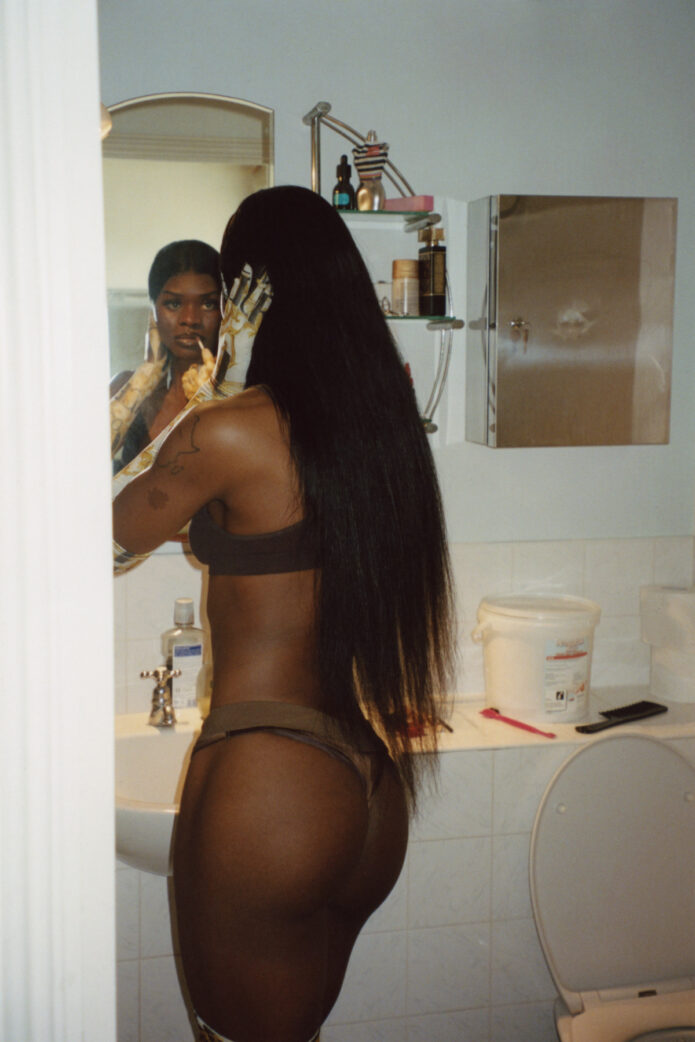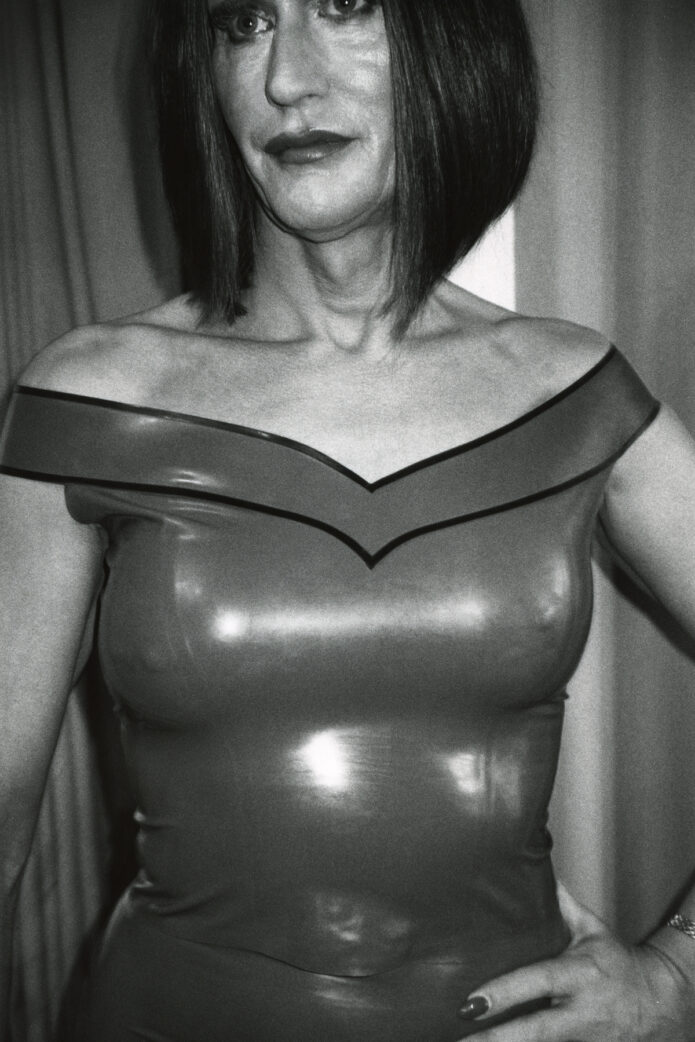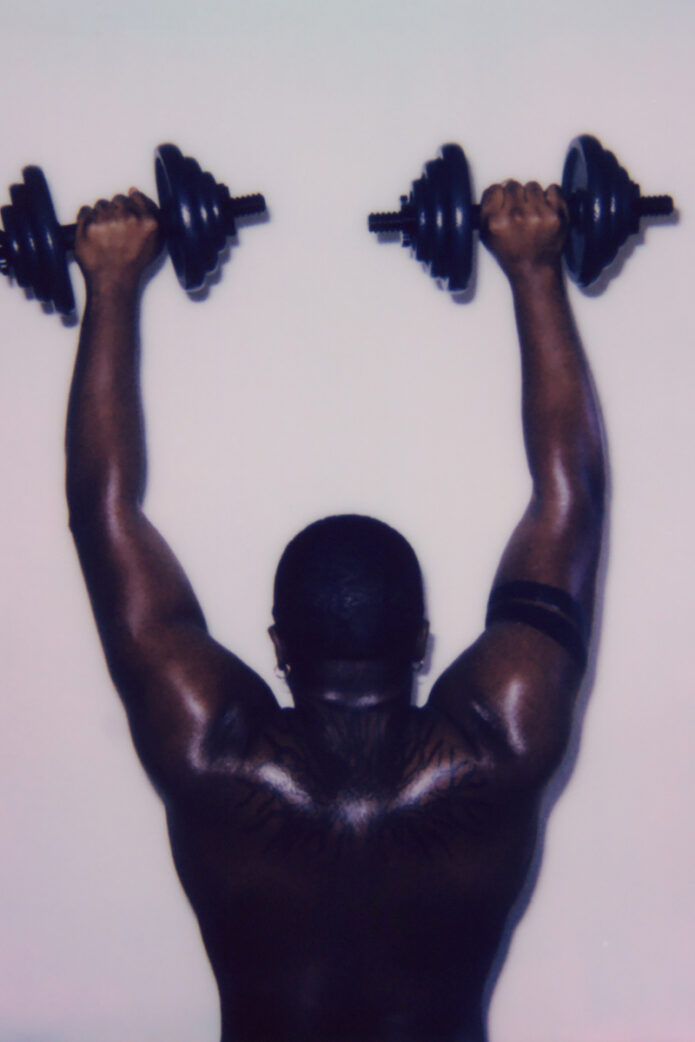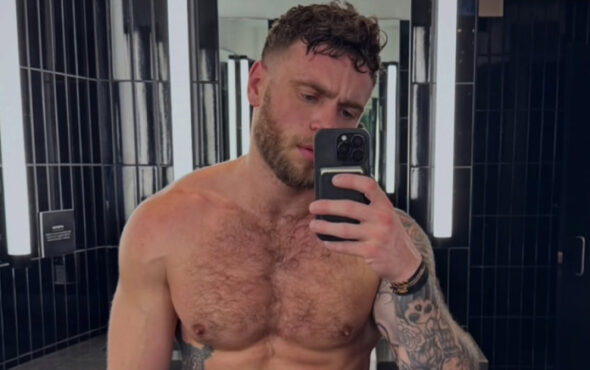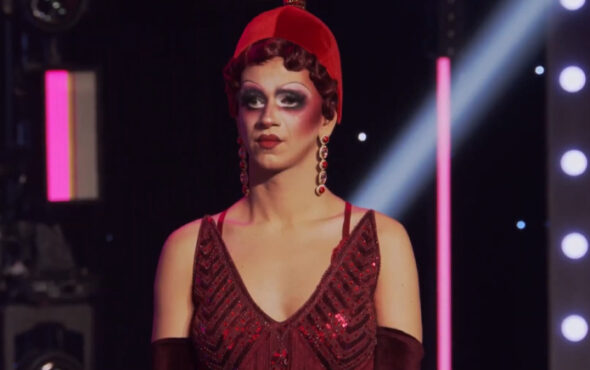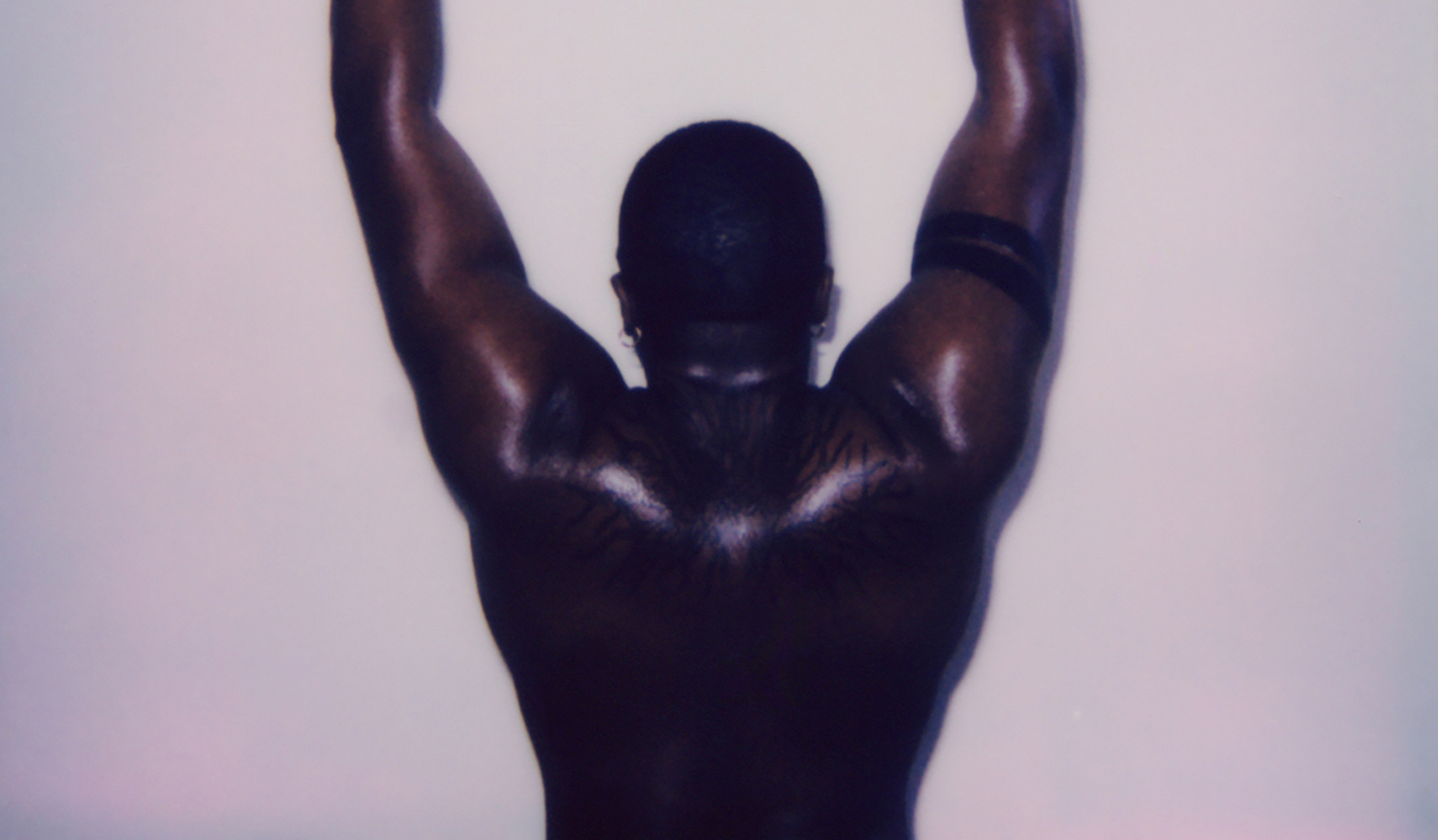
While recent years have seen an explosion in interest in topics like kink, polyamory and sex positivity – thank you Feeld! – widespread censorship still exists across all corners of the internet when it comes to pretty much anything sexual (or should we say, “seggsual”?). This erotic erasure means that representations of sexuality in the mainstream can still be pretty pale, male and stale – which is where artists like Anna Sampson come in.
Using photography as her primary medium, the artist has spent three years building up a body of work exploring queer, kink and sex worker communities – a catalogue which is now displayed in her first photobook Other Intimacies. Across bold black and white images and dramatic film photos, she lovingly documents the individuals who are often sidelined in representations of the erotic – pushing forward the sexual imagination without sensationalising her subjects.
Below, we speak to Anna about her practice, finding her subjects within her own communities and where her work will go next.
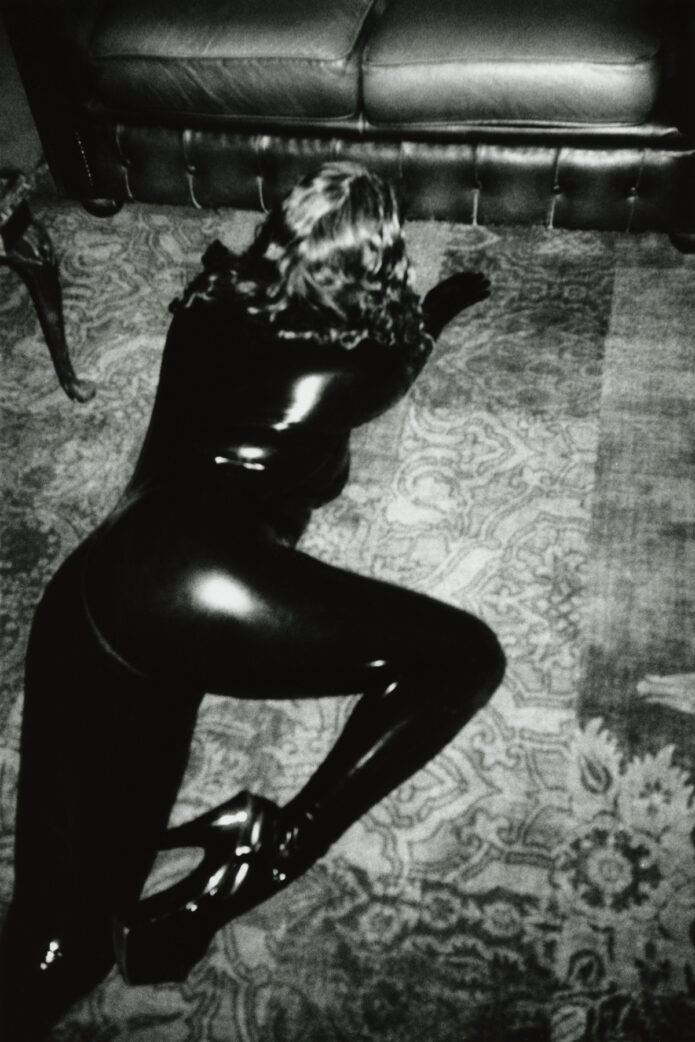
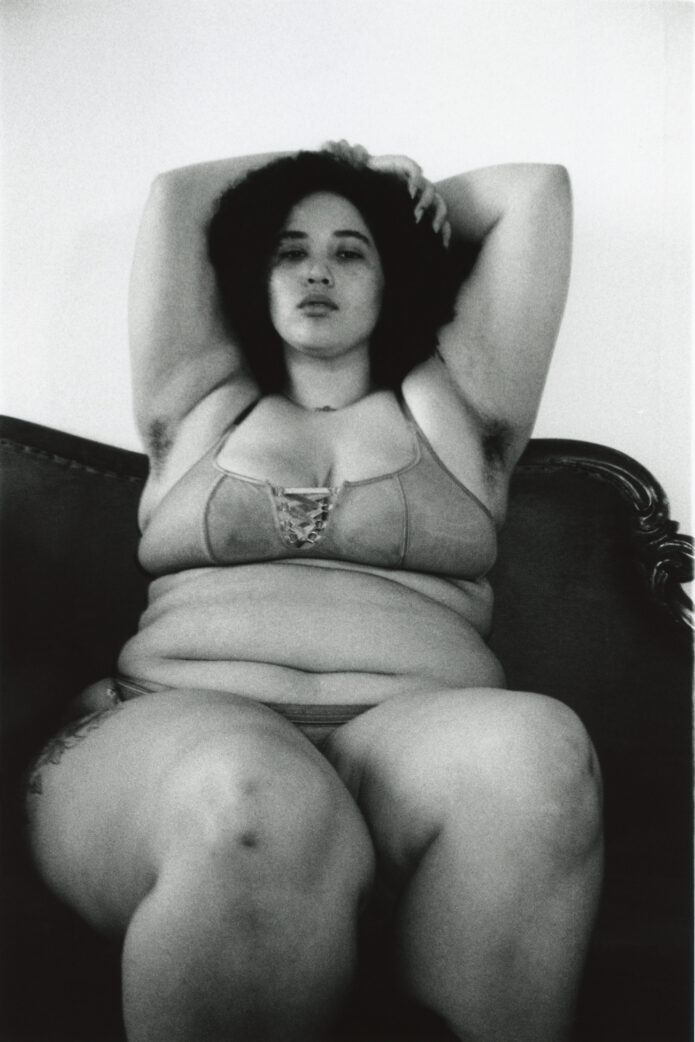
Hey Anna! Tell us a bit about who you are and your creative practice?
I am a photographic artist whose work explores the interplay of performance, queerness, eroticism, and resistance. My practice stems from a lifelong fascination with the erotic potential of the body and its performance, focusing my lens on the community of strippers, artists, pro-dommes, sex workers, fetishists, and queer lovers both within my immediate circle and beyond. I have always chosen to work with friends as my muses, and I believe this translates into my imagery. By collaborating with other queer artists and sex workers, you can see and feel the mutual respect we have for one another, because there is that shared experience which makes the images even more special!
How would you describe Other Intimacies? What was the process of shooting and compiling these images?
Other Intimacies was born out of frustration over the lack of representation of authentic lesbian and queer relationships in erotica, as well as other marginalised and stigmatised sexualities. Erotica remains dominated by the cisgender heterosexual perspective, which I find so reductive and boring. Other Intimacies serves as an antithesis to that gaze. My goal was to centre the visibility of those who are often overlooked, censored or ‘othered’ in society and mainstream culture, aiming to create an inclusive and celebratory space of desire.
I shoot on film and print by hand in the darkroom, which is an essential part of my process. It provides a tactile and visceral experience that makes the images distinctive and unique. I don’t strive for perfect photography; instead, I value the experimentation and intimacy that the darkroom allows. Compiling the final images was the most challenging aspect of the project as I wanted the book to be well-structured and curated to elevate the images, so I had to be ruthless in my choices to ensure a coherent flow. There are so many incredible images that didn’t make the final cut, so I should definitely consider creating an outtake zine in the future.
How would you describe London’s queer community?
London’s queer community is dynamic and exciting. The people here are incredibly talented and resourceful, much like sex workers, who also exhibit multifaceted qualities, and are so supportive and resilient. We are fortunate to have such a vibrant scene right on our doorstep, especially knowing it’s a very different experience elsewhere in the world right now.
How would you describe the overlaps between sex work and queer communities?
I see many parallels between the queer and sex worker communities, which is why I centred the visibility of both in my book. Notably, it was two trans women of colour – who were also sex workers – who initiated the Stonewall Riots, birthing our queer rights.
Historically, marginalised sexualities have always played a crucial role in significant social and political movements, illustrating how the oppression of gender, race, sexuality, and class are interconnected. Ultimately, members of both the sex worker and queer communities are striving for the same liberation; they are not isolated groups and often support and uplift one another.
What do you hope the impact of these images is?
I wanted to create more of a fine art book-object, so that people take their time to digest the artworks, but also the written pieces that contextualise the images. Erotica and sexual material can often feel quite sterile and one-dimensional (the male gaze), so I wanted to show that erotica can be romantic and intelligent too. My work is academically informed, and this book was inspired by my MA dissertation, which highlighted my concerns about the lack of intersectional representation in erotica and mainstream culture. Ultimately, I want to centre queer and marginalised talent in a way that is authentic and non-tokenistic.
What’s next for you?
I actually don’t know and I find that refreshing. A few days after completing my MA, I
started working at a strip club (lockdown had just ended). Shortly after that, I began creating this body of work, so everything has been very purposeful and intentional over the past 3+ years. I’ve enjoyed slowing down and catching my breath for the first time in my adult life.
My new goal is to see this collection of images in a gallery space, although I’m uncertain if the art world is quite ready for this imagery yet – although it should be!
You can purchase Anna’s work here and follow her work on IG.
